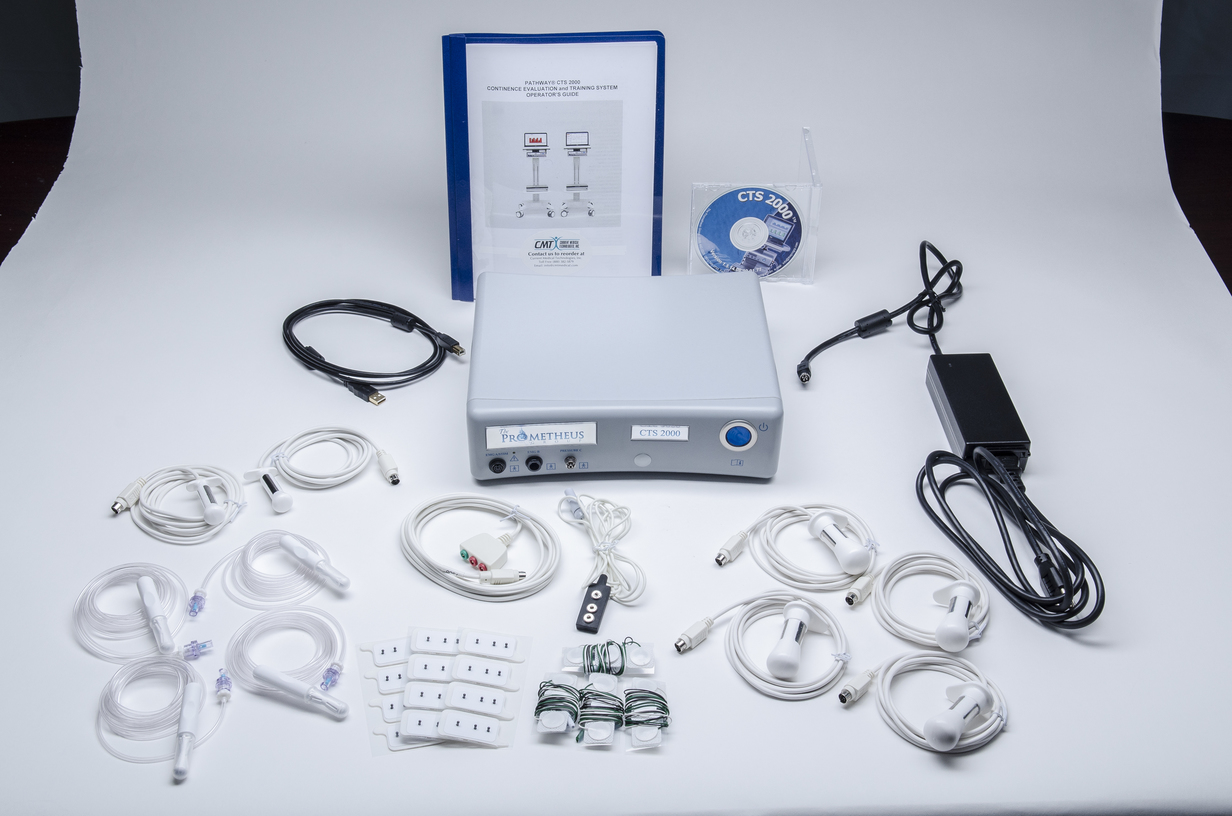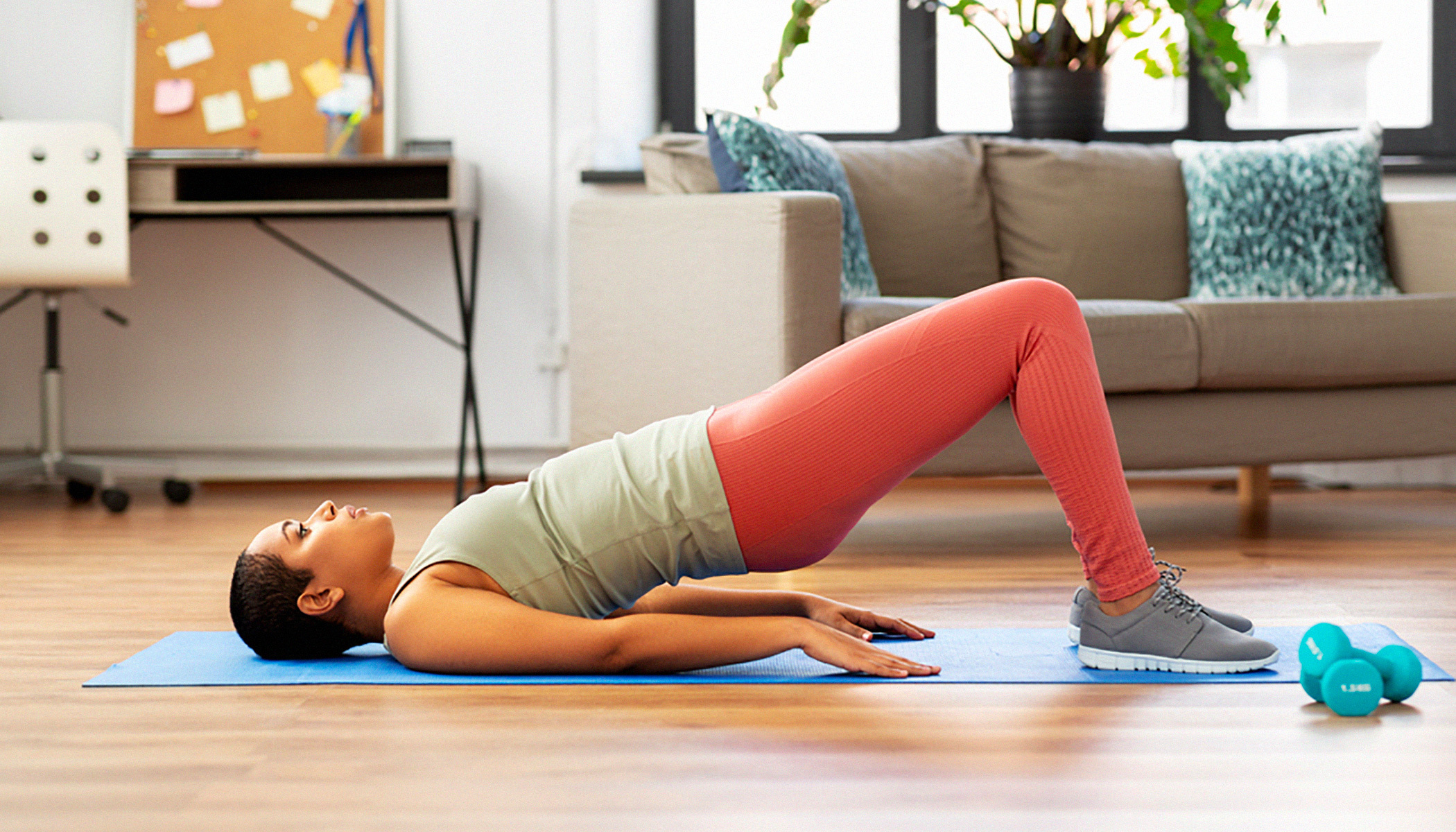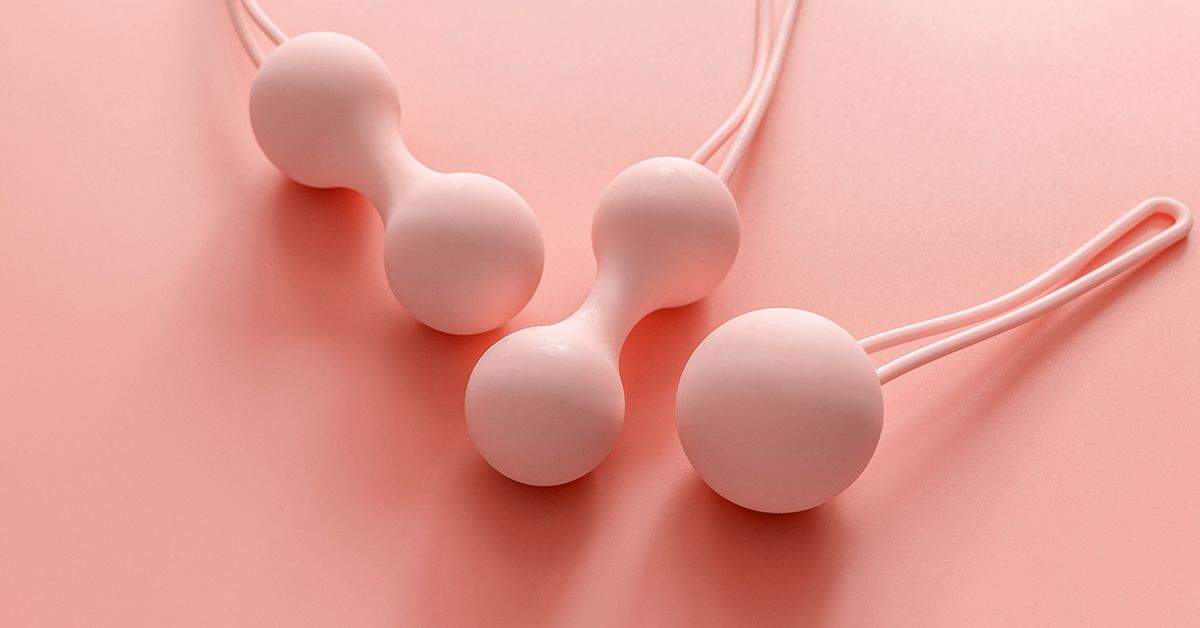I was not born with childbearing hips. My adult hip measurement rivals that of a teenage boy’s. So when I finally got pregnant, one of my major apprehensions was that since my hips weren’t good, wide birthing hips, I probably didn’t have a pelvis capable enough to endure the physical strain of childbirth.
My OB, of course, assured me I had nothing to worry about, that I was physically able to bear a child without breaking my body in two. And to further ease my hormonal nerves, she suggested that I channel all my anxiety instead into doing a Kegel exercise routine in preparation for childbirth.
What is Kegel Exercise?
Kegel exercise for pregnant women strengthens your pelvic floor muscles, which are your vaginal muscles and the muscles that support your bladder, uterus, and bowels.
Though invisible to the naked eye, these muscles are essential in labour and delivery. Strengthening these muscles during pregnancy can help you develop the ability to control and utilise them, as well as help them heal and ease back into their original size after birth.
Is Kegel Exercise Good for Pregnant Woman

Image from Pexels
Kegel exercises can help to build up the muscles that support the uterus, bladder, and bowels. Building these muscles during pregnancy will teach you to relax and control the muscles before labour and delivery.
Kegel exercise for pregnant women is also strongly suggested during the postpartum period to strengthen the pelvic floor muscles, assist in their recovery from childbirth, improve urinary control, and stimulate the repair of perineal tissues.
For many pregnant women, performing Kegel exercises is a safe and effective way to keep the pelvic floor muscles strong. However, if you experience pelvic, abdominal, hip, or back pain, doing Kegels may be adding to your pain, claims physical therapist Heather Jeffcoat.
Examples of pelvic and abdominal pain that should prompt a woman to consider whether Kegels are necessary include bladder pain, vulvodynia, vestibulodynia, vaginismus, dyspareunia, painful intercourse urinary urgency and/or frequency, endometriosis, or constipation, according to the author.
If you experience any of these problems, Jeffcoat urges you to get assessed by a pelvic floor physical therapist who can offer advice on treating and dealing with your pain.
When to Start Kegel Exercise in Pregnancy
Jamie Lipeles, an OBGYN, says the most important times for kegel exercise for pregnant women are during pregnancy and right after delivery, for both vaginal delivery and caesarean section. Nevertheless, it is advisable to start Kegel exercises when young.
But if you have any medical conditions that may make Kegels dangerous, it’s best to speak with a doctor.
Jeffcoat added that the best way to determine whether Kegels should be performed or not during pregnancy is to have your pelvic floor muscles checked, take an honest look at any symptoms that you are feeling, and discuss that with your doctor or physical therapist.
She maintains that stopping Kegels until your practitioner has given them further thought is the conventional treatment for pain problems.
How to Do Kegel Exercise for Pregnant Women

Image Source: iStock
The best thing about a Kegel exercise for pregnant women? It can be done anywhere, anytime, without anyone knowing you’re doing them! Here are the steps to performing Kegels during pregnancy.
Step 1: Identify your pelvic muscles.
The first thing to do when it comes to doing Kegels is to identify your pelvic floor muscles by stopping your urination midstream. Alternatively, you can try inserting a clean finger inside your vagina. When you feel the squeeze, then you’ve found the right muscles.
You may also do the following steps recommended by Healthline:
- Go to the bathroom.
- Urinate normally for three seconds, then stop.
- Relax and let the urination run its course.
- Repeat. The right muscles to squeeze or tighten may take a few tries to find, but if you stick with it, you’ll soon be executing numerous sets of Kegels.
Jeffcoat suggests doing Kegels either from the anus toward the vagina or from the back to the front. If carried out correctly, according to Jeffcoat, you will also experience a slight tightness and flattening of your lower abs.
Step 2: Work it, girl!
The next step is to perfect your Kegel exercise. Empty your bladder and lie on your back. Tighten your pelvic floor muscles, hold the contraction for about five seconds, and then relax for another five.
Gradually increase these times until you can keep your muscles contracted for 10 seconds at a time. Aim for at least three sets of 10 reps a day.
Step 3: Eyes on the prize.
For best results, concentrate on tightening only your pelvic floor muscles. Be careful not to flex the muscles in your abdomen, thighs, and buttocks. Refrain from holding your breath and remember to breathe freely when doing your Kegels.
Step 4: Cross-train Kegels with pelvic squats.
You can also up your Kegel exercise routine by adding some basic squats to further strengthen your pelvic floor. Don’t aim to do 300 in a day, however. Doing a few squats correctly and regularly should help do the trick.
Step 5: Make Kegel exercise a lifetime routine.
Just because you’ve popped the baby out doesn’t mean you should stop doing Kegels. It’s ideal to continue the exercise to maintain pelvic strength, ward off incontinence (the inability to control your pee) as you age, and prevent pelvic organ prolapse. Your pelvic muscles stay with you even long after giving birth, so it’s only right to make Kegels part of your routine.
Kegel Essentials: Must-Have Tools for Strengthening Your Pelvic Floor
Kegel exercises are a powerful way to strengthen your pelvic floor muscles, but having the right tools can make your efforts even more effective. Whether you’re a beginner or looking to take your routine to the next level, this guide will introduce you to the essential items that can enhance your Kegel practice and help you achieve better results.
1. Kegel Weights

Source: Bump Physio & Co
Kegel weights, also known as vaginal weights or cones, are popular tools for enhancing your Kegel routine. These small, weighted devices are inserted into the vagina and held in place by contracting the pelvic floor muscles.
Benefits of using Kegel weights:
- Provide resistance for more effective muscle strengthening
- Help you identify and isolate the correct muscles
- Allow for progressive training as you increase weight over time
When choosing Kegel weights, look for a set with multiple weight options to allow for gradual progression as your muscles become stronger.
2. Biofeedback Devices

Source: CMT Medical
Biofeedback devices are high-tech tools that provide real-time feedback on your Kegel performance. These devices typically consist of a small sensor inserted into the vagina and connected to a smartphone app or handheld monitor.
Advantages of biofeedback devices:
- Offer visual or auditory cues to ensure you’re contracting the right muscles
- Track your progress over time
- Provide guided exercise routines
While more expensive than other options, biofeedback devices can be particularly helpful for those who struggle to identify their pelvic floor muscles or want detailed progress tracking.
3. Electrical Stimulation Devices

Source: Utah Medical
Electrical stimulation devices use low-level electrical currents to stimulate and strengthen the pelvic floor muscles. These devices come in both internal and external varieties.
Benefits of electrical stimulation:
- Can help “wake up” weak or underactive pelvic floor muscles
- Useful for those who have difficulty performing voluntary contractions
- May provide faster results compared to manual exercises alone
It’s important to consult a healthcare provider before using an electrical stimulation device, as they may not be suitable for everyone.
4. Kegel Exercise Apps

Source: Perifit Care | Original Kegel Exerciser
While not a physical tool, smartphone apps designed specifically for Kegel exercises can be invaluable resources.
Features of Kegel exercise apps:
- Guided exercise routines
- Reminders to perform your exercises
- Progress tracking features
Many of these apps are free or low-cost, making them an accessible option for anyone looking to start or maintain a Kegel routine.
5. Pelvic Floor Exercisers

Source: Livi UK
Pelvic floor exercisers provide resistance and feedback during Kegel exercises, often combining elements of weights and biofeedback devices.
Advantages of pelvic floor exercisers:
- Offer a more comprehensive workout for the pelvic floor muscles
- Provide feedback to ensure proper technique
- Can make exercises more engaging and fun
When choosing a pelvic floor exerciser, look for one that’s comfortable to use and offers adjustable resistance levels.
6. Kegel Balls

Source: Healthline
Kegel balls, also known as Ben Wa balls, are small, weighted balls inserted into the vagina. These balls often contain smaller balls inside that move as you move, creating a subtle vibration that encourages muscle contraction.
Benefits of Kegel balls:
- Can be worn during daily activities for passive exercising
- Available in various weights and sizes for progression
- May enhance sexual pleasure in addition to strengthening muscles
When using Kegel balls, start with larger, lighter options and gradually progress to smaller, heavier balls as your muscles strengthen.
Choosing the Right Tools for You
With so many options available, it’s important to choose the tools that best fit your needs and preferences. Consider factors such as:
- Your current pelvic floor strength
- Any specific pelvic health issues you’re addressing
- Your budget
- Your comfort level with different types of devices
While these tools can be helpful, they aren’t necessary for effective Kegel exercises. Many people achieve great results with manual exercises alone. However, if you’re looking to enhance your routine or need extra motivation, these tools can be valuable additions to your pelvic health toolkit.
A Word of Caution
Before starting any new exercise routine or using pelvic floor exercise devices, it’s always a good idea to consult a healthcare provider, especially if you have existing pelvic health concerns. They can provide personalized advice and ensure you’re using these tools safely and effectively.
By incorporating these tools into your Kegel exercise routine, you can take a proactive approach to your pelvic health. Whether you’re preventing future issues or addressing current concerns, a strong pelvic floor is an important part of overall wellness. With consistency and the right tools, you’ll be on your way to better pelvic health in no time.
Third Trimester Kegel Exercise for Pregnant Women
The American College of Obstetrics and Gynecology recommends 30 minutes or more of moderate activity each day on most days of the week unless you have a medical condition or pregnancy difficulty.
During your second or third trimester, try incorporating a
yoga ball for pregnancy into your exercise routine. This can help improve balance and coordination, strengthen and tone your whole body, and provide relief from tension and stress. Consider using it while sitting or standing to enhance the effectiveness of your pelvic exercises and ensure proper weight distribution.
- Your weight should be properly distributed while you sit in a chair with your feet flat on the ground.
- If you’re doing this while standing, your feet should be roughly hip-width apart. Put the same amount of force on both feet.
- Tighten your abdominal muscles and rotate your pelvis upward as you exhale.
- Release to your starting position after three to five seconds of holding.
- Repeat 10 times.
ALSO READ:
Sports and Exercises That Are Safe During Pregnancy
1 Or 2 Centimetres Dilated: What Exactly Does It Mean?
Best Exercises To Practice Breathing Techniques For Labour
Kegel Exercise for Pregnant Women: When to Stop
If you start to feel any of the following while doing kegel exercise for women, stop working out and speak with your doctor:
- Pain in the chest
- Ongoing contractions, pain in the pelvis, or both
- Headache
- Decrease or absence of fetal movement
- Lightheaded, nauseous, faint, or dizzy
- Numb or cold
- Haemorrhage
- A trickle of fluid that seeps continuously or a sudden flood of fluid from the vagina
- Quick or erratic heartbeat
- Calf pain or abrupt swelling in your hands, face, or ankles
- Trouble breathing
- Trouble walking
- Weakened muscles
Safety Tips on Kegel Exercise for Pregnant Women
- After the first trimester, avoid lying flat on your back when exercising. In this posture, the inferior vena cava, an important vein that carries blood back to the heart, is pressed against the uterus. You can feel dizzy, out of breath, or ill if this blood flow is restricted.
- Exercise cautiously and stay off uneven terrain. Pregnancy weight growth will alter your centre of gravity, making you feel unbalanced.
- Always wear sturdy footwear.
- To prevent getting too hot when exercising, drink water before, during, and after.
- Never push yourself too hard during a workout. If talking while exercising is difficult, slow down or take brief breaks.

Image Source: Stock
Republished with permission from theAsianparent Philippines
Here at theAsianparent Singapore, it’s important for us to give information that is correct, significant, and timely. But this doesn’t serve as an alternative for medical advise or medical treatment. theAsianparent Philippines is not responsible to those that would choose to drink medicines based on information from our website. If you have any doubts, we recommend to consult your doctor for clearer information.